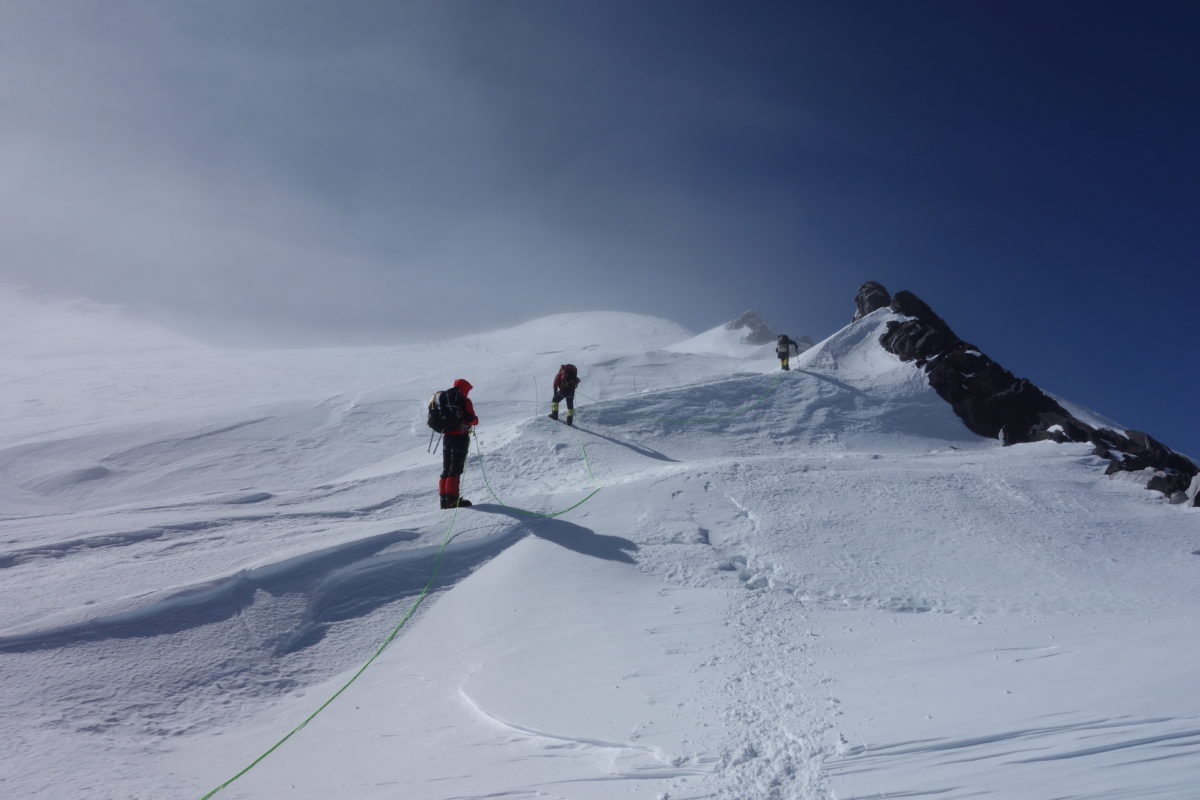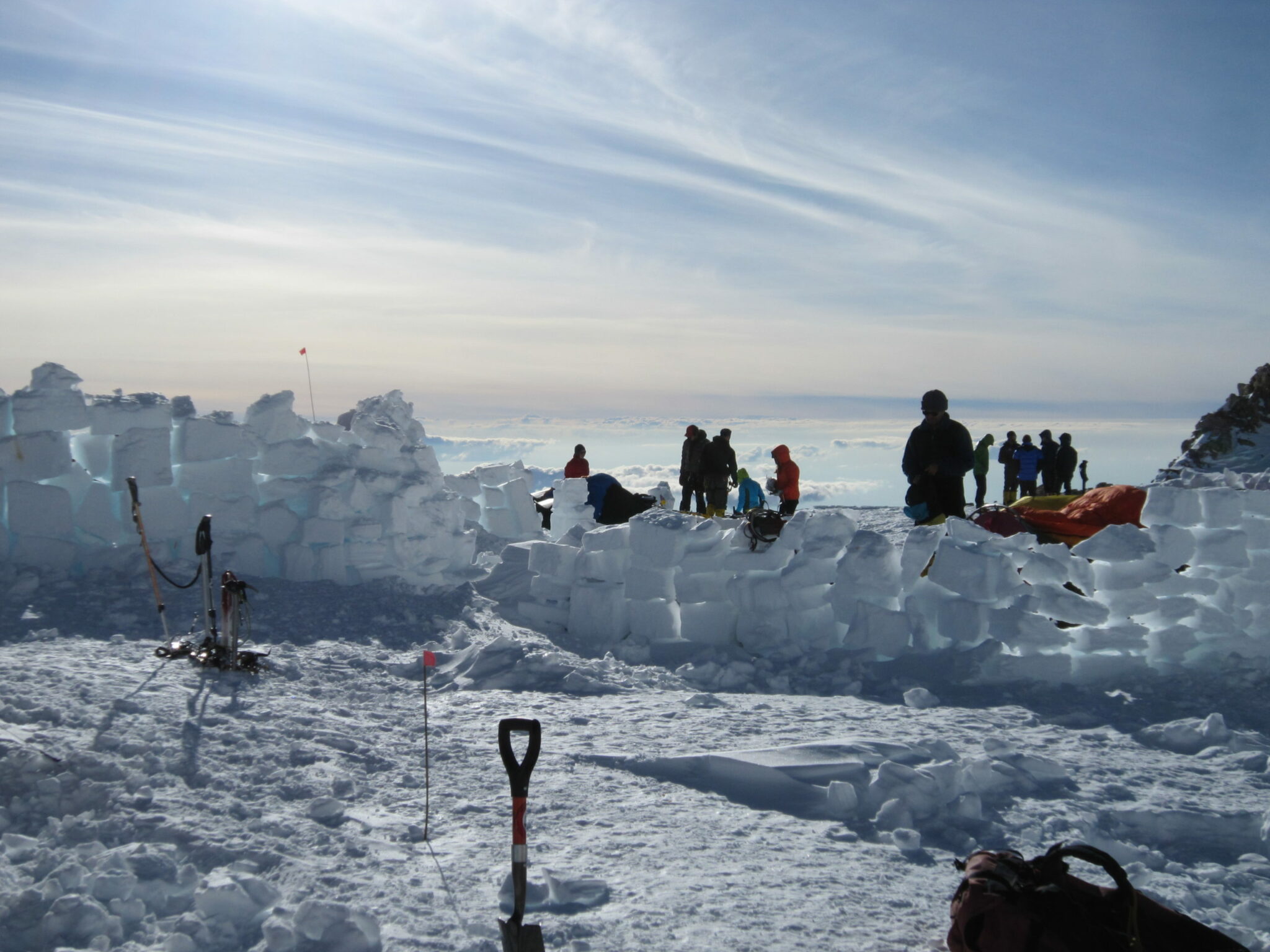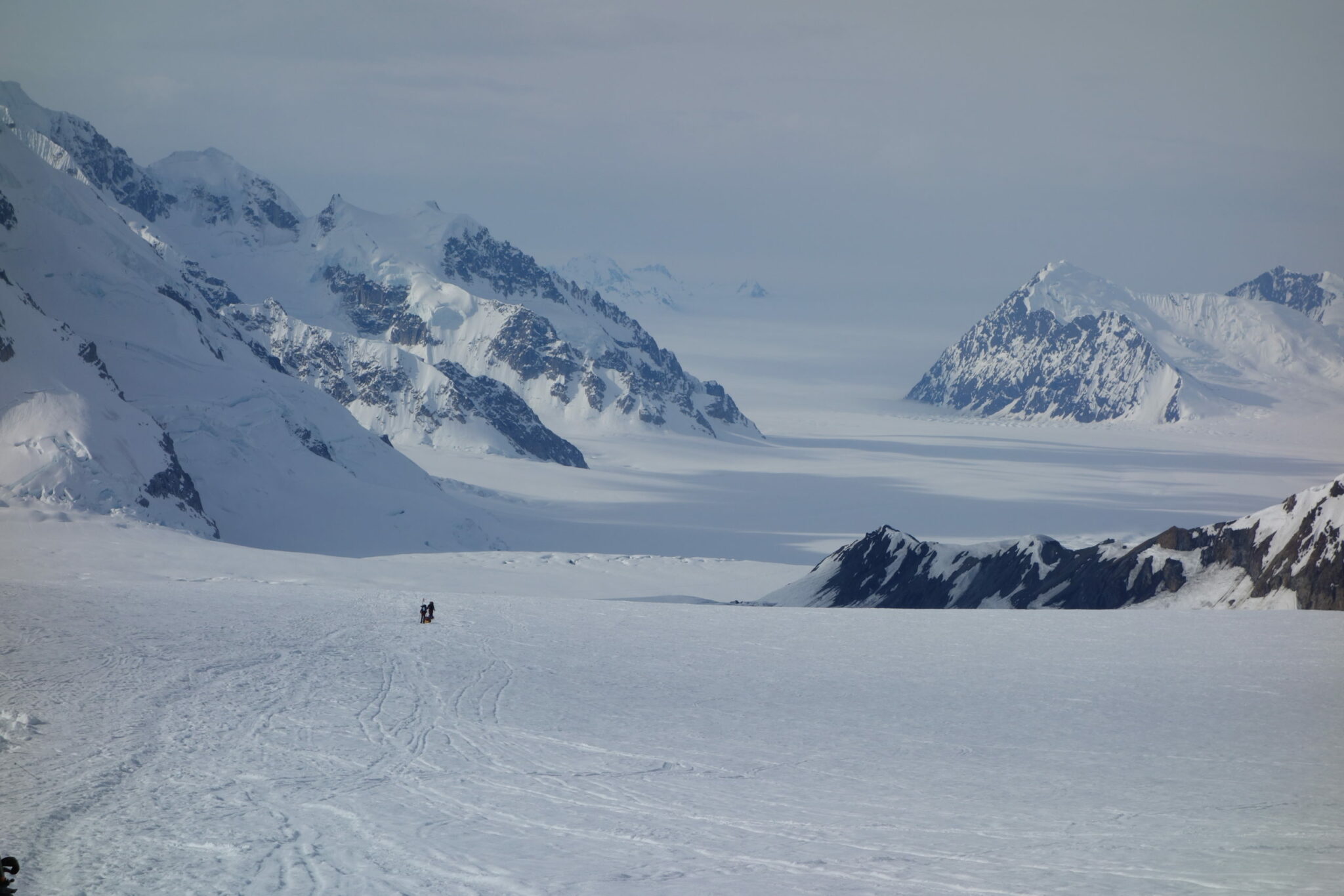Climb Denali
Climbing Denali required good mountaineering experience and excellent physical conditioning. We only build teams for Denali, bringing people we have seen in action on previous trips. Denali requires excellent team work and commitment and we require everyone to come with the correct training and previous experience. The cost start from $12,950.
Tips for Climbing Denali
Daily Distances
Day 1
Meet in Anchorage, Alaska. Our team meeting takes place at 10 am for an expedition orientation and equipment check. This is a very important meeting, which you must attend! Be sure to arrive in Anchorage early enough to make the meeting; which may require arriving a day early. Included in our expedition fees are two nights lodging before the expedition at the Earth B&B, which is conveniently located near downtown Anchorage. We also provide transportation within Anchorage to pick up last minute items on the day of our team meeting.
Day 2
Travel to Talkeetna and fly to the glacier. You will be provided with a shuttle service for you and team members to travel the several hours to Talkeetna. Everyone will need to register with the National Park Service prior to flying to the glacier. Weather permitting; we will fly into the Kahiltna Glacier at 2,195 m/7,200 ft that afternoon. Once on the glacier, everyone will need to pitch in to get Base Camp established so we can proceed with our on-glacier expedition orientation that will cover the following topics: glacier travel, crevasse rescue, sled rigging, rope management and camp site procedures.
Day 3
Single carry to 2,377m/ 7,800 feet Camp. We depart base camp, dropping down the infamous Heartbreak Hill and onto the broad Kahiltna glacier. Our goal will be to move camp to about 7,800 feet, near the junction with the NE Fork of the Kahiltna Glacier. This is a moderately tough day of about 9 miles round-trip and is a good shake-down for the upcoming days. Depending on the team and weather we may or may not carry loads and return to Base Camp. Throughout the expedition we will typically follow the “climbs high, sleep low” technique for the best acclimatization. On the late May and June expeditions, we may be doing our climbing early in the morning to avoid the excessive heat and soft snow conditions on the Lower Glacier.
Day 4
Haul loads up to Kahiltna Pass. We’ll head out of 2,377m/ 7,800 feet Camp and carry loads up the 549 m/1,800ft Ski Hill. Several options exist for camp sites between 2,743m & 3,353m (9,000 & 11,000 feet), depending upon weather, snow conditions and team strength. This is a moderately difficult carry of 7-9 miles round-trip, with 2,000 to 3,000 feet of elevation gain and a return to 2,377m/ 7,800 feet Camp for the night.
Day 5
Move everything to 3,414m/ 11,200 feet camp. Our second camp is often in the basin at the base of Motorcycle Hill. This is an incredibly beautiful camp that basks in alpenglow when the sun travels around the north side of the mountain.
Day 6
Pack-carry day. This is an active rest day during which we drop back down and pick up the cache we left down near Kahiltna Pass. It also helps give us another day to acclimatize before moving higher.
Day 7
Haul loads around windy corner 4,054m/ 13,300 feet. Steep snow climbing up the 305m/ 1,000 feet high Motorcycle Hill rewards you with spectacular views. The total distance for the day is about 4 miles round trip with a little over 610 m/2,000 feet of elevation gain. Fun climbing with crampons and ice axe gets you around windy corner where the upper mountain comes into view.
Day 8
Move camp to 4,328m/ 14,200 feet. This is usually a long, hard day. Our next camp is generally located at the well equipped camp in the expansive Genet Basin. Loads are getting lighter and the air is getting thinner. Hopefully everyone will have enough energy left to help get camp in as we need to fortify this camp due to the possibility for fairly severe weather.
Day 9
Pack-carry day. This is another active rest day, during which the team will descend from Genet Basin to the windy corner cache and bring everything up to 4,328 m/ 14,200 feet. We’ll spend the afternoon going over climbing techniques that we will use in the upcoming days.
Day 10
Climb up the head wall to the ridge. Our goal is to cache supplies up on the ridge above us and return to 4,328m/ 14,200 feet. Climbing up the head wall (the section of route with fixed lines running from 15,500 to 16,100 feet) with a heavy pack is one of the more strenuous days of the trip because of the steep terrain, heavy pack and thinning air. The views from the ridge are amazing.
Day 11
Rest day. It is often prudent to take a rest/acclimatization day prior to moving up to High Camp.
Day 12
Move to high camp. Weather and team strength will again determine this decision. While there is a camp site at 4,907 m/16,100 ft, it is very exposed, so we usually push for the 5,243 m/17,200 ft site which is more secure and the better choice for camp. This is a really tough day, as our loads are big and the terrain is steep in sections. Rewards for our work are in the great climbing along the ridge. Weaving in and out of the rocks and occasionally walking a knife edged stretch, combine with big exposure to create one of the most memorable parts of the route.
Day 13
Rest day. Moving to 5,243m/ 17,200 feet and getting high camp established can be a huge day, so we usually take a rest day before attempting the summit.
Day 14
SUMMIT DAY! It’s time to Climb Denali if the weather is favorable, we’ll push for the summit, however if the weather is not good, we will not go. It is important to be patient! We will only try for the summit when the weather is good, meaning mostly clear and calm. Our guides are the most experienced on the mountain and will make this sometimes difficult decision. The round trip climb will take eight to twelve hours or more. Usually you will depart camp early 7- 9 am, climb up to Denali Pass(5,486 m/18,000 ft) and follow the route past Arch Deacon’s Tower and the Football Field to the slopes leading to the Summit Ridge. On this spectacular ridge you can often see down into the Ruth Glacier with views of beautiful peaks such as Mooses Tooth, Mt Huntington and Mt Hunter.
*Our guides will access the weather and conditions on the mountain and the team members. Everyone attempting the summit needs to have demonstrated that they can safely give it a shot. This is often the most grueling day of the expedition (some climber’s say of their lives!). The guides have the ultimate decision as to when the team will make a summit bid. The guides also have the discretion to decide that a team member has not shown that he or she is capable to safely make a summit bid. Such occurrences are rare; but remember we treat your safety is our primary concern.
Day 15
DESCENT. The descent from High Camp takes from one to two days, depending on the team’s strength and motivation to get home. The descent can beat you up more than the ascent, as we often have the heaviest loads of the trip as we go down from High Camp to Camp 2. Weather dictates when we can fly out to Talkeetna for food and showers.
Day 16
We still have to descend low and hope the weather is in our favor.
Day 17
CONTINGENCY DAYS. We build five extra days into our schedule. Denali has a well-deserved reputation for arctic weather and it is common to take weather days at some point on the mountain.
Day 18
CONTINGENCY DAYS. We build five extra days into our schedule. Denali has a well-deserved reputation for arctic weather and it is common to take weather days at some point on the mountain.
Day 19
CONTINGENCY DAYS. We build five extra days into our schedule. Denali has a well-deserved reputation for arctic weather and it is common to take weather days at some point on the mountain.
Day 20
CONTINGENCY DAYS. We build five extra days into our schedule. Denali has a well-deserved reputation for arctic weather and it is common to take weather days at some point on the mountain.
Day 21
CONTINGENCY DAYS. We build five extra days into our schedule. Denali has a well-deserved reputation for arctic weather and it is common to take weather days at some point on the mountain.
Day 22
RETURN TO ANCHORAGE. We will provide group transportation back to Anchorage and assist in making any necessary lodging reservations; however any lodging after the climb is your responsibility. As we cannot predict when we will come off the mountain, we cannot make arrangements for lodging ahead of time. This is a true transition day from the intensity of the mountain to the relative big city life of Anchorage.
Ready to go?
Does this information on our Denali climbs excite you? Take the next step towards achieving your goals of reaching the summit of Denali with us.
We pride ourselves on making sure that our clients have every opportunity to succeed in the mountains, including professional training advice, gear lists and video links on how to pack your bag, and much more.
We are always available to answer any questions you may have by email, phone or skype, so contact us today!
See More when is the best time to climb Denali!









